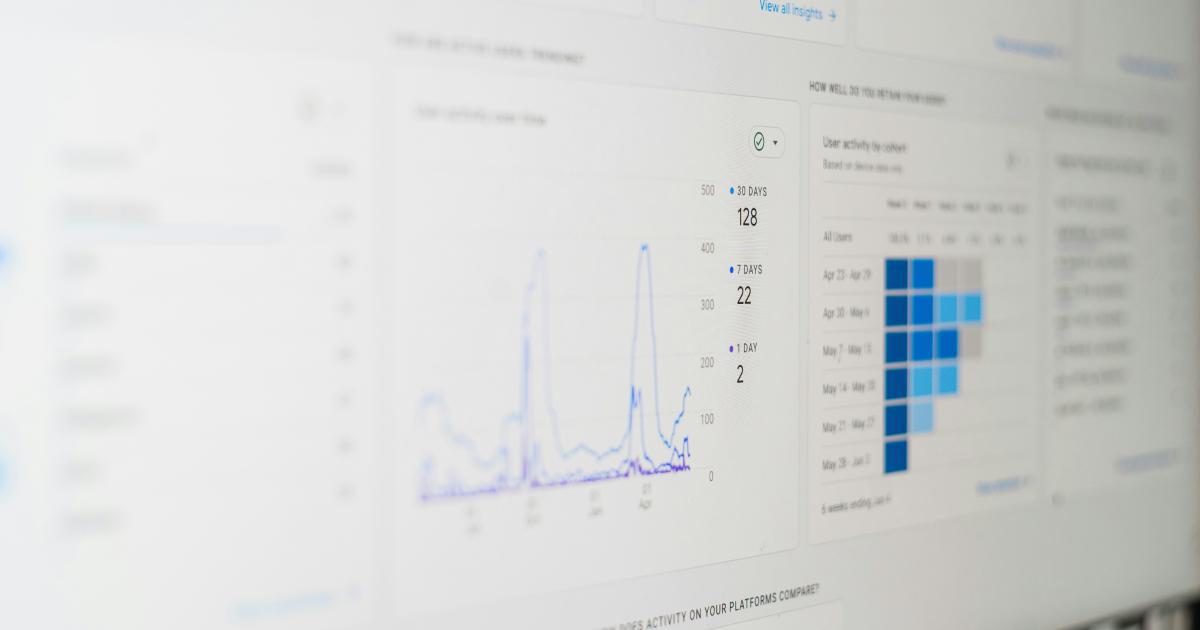How to Boost Conversion Rates with Advanced Segmentation in Analytics


In today's data-driven world, understanding your audience is the key to driving successful marketing campaigns and improving your overall business performance. One of the most powerful tools in your arsenal is advanced segmentation in analytics, which allows you to dive deep into your customer data and uncover valuable insights that can have a significant impact on your conversion rates.
Understanding the Importance of Advanced Segmentation
The foundation of any effective marketing strategy lies in understanding your target audience. Traditional demographic data, such as age, gender, and location, can provide a good starting point, but it often falls short in truly capturing the nuances of your customer base. This is where advanced segmentation comes into play.
Advanced segmentation goes beyond the basic demographic data and delves into the psychographic, behavioral, and even contextual characteristics of your customers. By analyzing factors like user interests, browsing history, purchase patterns, and even device usage, you can create highly targeted and personalized marketing campaigns that resonate with your audience on a deeper level.
The Benefits of Advanced Segmentation
Improved Targeting: With advanced segmentation, you can identify and target the most valuable segments of your audience, ensuring that your marketing efforts are focused on the customers who are most likely to convert.
Personalized Messaging: By understanding the unique needs and preferences of each customer segment, you can craft tailored messaging and content that speaks directly to their interests and pain points, leading to higher engagement and conversion rates.
Optimized Resource Allocation: Advanced segmentation allows you to prioritize your marketing efforts and allocate resources more effectively, focusing on the segments that offer the greatest potential for growth and profitability.
Enhanced Customer Insights: Analyzing your customer data through the lens of advanced segmentation can uncover valuable insights about their behaviors, preferences, and pain points, which can inform your product development, customer service, and overall business strategy.
Increased Loyalty and Retention: By providing a more personalized and relevant experience, advanced segmentation can help you build stronger relationships with your customers, leading to increased loyalty, repeat business, and a higher lifetime value.
Implementing Advanced Segmentation in Analytics
To maximize the benefits of advanced segmentation, you'll need to leverage the power of your analytics platform. Here are the key steps to implementing advanced segmentation in your analytics strategy:
Step 1: Define Your Segmentation Criteria
The first step in implementing advanced segmentation is to identify the specific criteria you'll use to segment your audience. This can include a combination of demographic, psychographic, behavioral, and contextual factors, such as:
- Demographic: Age, gender, location, income, education level, etc.
- Psychographic: Interests, values, lifestyle, personality traits, etc.
- Behavioral: Purchase history, browsing behavior, engagement levels, device usage, etc.
- Contextual: Time of day, day of the week, device type, referral source, etc.
Think carefully about the data points that are most relevant to your business and that can provide the most valuable insights about your customers.

Step 2: Collect and Analyze Your Data
Once you've defined your segmentation criteria, the next step is to collect and analyze the necessary data. This may involve integrating your analytics platform with various data sources, such as your customer relationship management (CRM) system, e-commerce platform, or social media channels.
Ensure that you have a robust data collection and analysis process in place, which may include:
- Data Aggregation: Consolidating data from multiple sources into a centralized platform for easier analysis.
- Data Cleaning and Normalization: Ensuring that your data is accurate, consistent, and ready for analysis.
- Segmentation and Clustering: Using advanced statistical techniques to identify meaningful customer segments based on your defined criteria.
- Behavioral and Contextual Analysis: Examining how customers interact with your products, services, and marketing materials across different channels and devices.

Step 3: Develop Targeted Marketing Strategies
With your customer segments identified and analyzed, you can now begin to develop targeted marketing strategies for each segment. This may include:
- Personalized Content and Messaging: Crafting tailored content, offers, and messaging that resonate with the unique needs and preferences of each segment.
- Optimized Channel Selection: Determining the most effective communication channels for each segment, based on their preferred methods of engagement.
- Automated Campaigns: Leveraging marketing automation tools to deliver personalized, real-time experiences to your customers.
- Predictive Modeling: Using advanced analytics to anticipate customer behavior and proactively address their needs.

Step 4: Continuously Optimize and Refine
Advanced segmentation is not a one-time exercise; it's an ongoing process that requires continuous monitoring, testing, and refinement. As your business and customer base evolve, you'll need to adjust your segmentation criteria and marketing strategies accordingly.
Regularly review your analytics data, test different approaches, and be prepared to pivot your strategies based on the results. This will help you maintain a competitive edge and ensure that your marketing efforts continue to drive meaningful results.

Advanced Segmentation Strategies and Techniques
To truly unlock the full potential of advanced segmentation, it's important to explore a variety of strategies and techniques. Here are some examples of how you can take your segmentation efforts to the next level:
Behavioral Segmentation
Analyzing customer behavior is a powerful way to identify valuable segments and personalize your marketing efforts. Some key behavioral factors to consider include:
- Purchase History: Analyzing past purchase data to identify patterns, such as high-value customers, repeat buyers, or those who abandon shopping carts.
- Browsing Behavior: Examining how customers navigate your website or app, including the pages they visit, the time they spend, and the actions they take.
- Engagement Levels: Measuring customer engagement with your content, such as email open rates, social media interactions, and website activity.

Psychographic Segmentation
Going beyond demographics, psychographic segmentation focuses on the underlying values, attitudes, and personality traits of your customers. This can include factors such as:
- Interests and Hobbies: Identifying the passions and activities that motivate your customers.
- Lifestyle and Values: Understanding the beliefs, priorities, and lifestyles that shape your customers' decision-making.
- Personality Traits: Analyzing customer preferences and behaviors to uncover their underlying personality characteristics.

Contextual Segmentation
Contextual segmentation examines the circumstances and environment in which your customers interact with your brand. This can include factors such as:
- Device Usage: Analyzing the devices (desktop, mobile, tablet) and operating systems used by your customers.
- Time and Location: Identifying patterns in when and where your customers engage with your brand.
- Referral Source: Examining the channels and platforms that drive traffic and conversions to your business.

Predictive Segmentation
By combining advanced analytics and machine learning, you can develop predictive models that anticipate customer behavior and identify high-value segments. This can include:
- Churn Prediction: Identifying customers at risk of leaving your business and proactively addressing their needs.
- Cross-Sell and Upsell Opportunities: Determining which products or services are most likely to appeal to each customer segment.
- Customer Lifetime Value: Estimating the long-term value of each customer segment and allocating resources accordingly.

Case Studies and Real-World Examples
To illustrate the power of advanced segmentation in action, let's explore a few real-world examples of how businesses have used this strategy to boost their conversion rates:
Example 1: Personalized Email Campaigns
A leading e-commerce retailer used advanced segmentation to optimize their email marketing campaigns. By analyzing customer behavior, they identified several key segments, including:
- High-Value Customers: Customers with a history of high-value purchases and repeat business.
- Cart Abandoners: Customers who had added items to their cart but never completed the purchase.
- New Subscribers: Customers who had recently signed up for the retailer's email list.
The retailer then developed personalized email campaigns tailored to each segment, offering relevant product recommendations, abandoned cart reminders, and exclusive offers. As a result, they experienced a 25% increase in email open rates and a 15% boost in conversion rates.

Example 2: Optimized Content Strategies
A content-driven media company used advanced segmentation to better understand their audience and create more engaging content. By analyzing factors like content consumption patterns, device usage, and demographic data, they identified several key segments, including:
- Casual Readers: Customers who visited the site occasionally and consumed a limited amount of content.
- Loyal Subscribers: Customers who regularly engaged with the company's content and newsletters.
- Social Sharers: Customers who frequently shared the company's content on social media platforms.
The media company then tailored their content strategies for each segment, adjusting the tone, length, and distribution channels to better meet their needs. This led to a 30% increase in overall content engagement and a 20% boost in conversion rates for their premium subscription offerings.

Example 3: Personalized Product Recommendations
An online electronics retailer used advanced segmentation to provide personalized product recommendations to their customers. By analyzing factors like browsing history, purchase patterns, and device usage, they were able to identify several key segments, including:
- Tech Enthusiasts: Customers with a strong interest in the latest gadgets and electronics.
- Home Office Shoppers: Customers who frequently purchased products for their home office or remote work setup.
- Budget-Conscious Buyers: Customers who were price-sensitive and focused on finding the best deals.
The retailer then developed a dynamic product recommendation system that automatically displayed personalized product suggestions based on each customer's segment. This resulted in a 22% increase in average order value and a 19% boost in overall conversion rates.

Conclusion
Advanced segmentation in analytics is a powerful tool that can help you unlock the full potential of your marketing efforts and drive significant improvements in your conversion rates. By delving deeper into your customer data and identifying the unique needs and preferences of your audience, you can create highly targeted and personalized marketing strategies that resonate with your customers on a deeper level.
Remember, effective advanced segmentation is an ongoing process that requires continuous monitoring, testing, and refinement. Stay up-to-date with the latest trends and best practices, and be prepared to adapt your strategies as your business and customer base evolve.
By embracing the power of advanced segmentation, you can elevate your marketing efforts, enhance the customer experience, and ultimately drive long-term growth and profitability for your business.